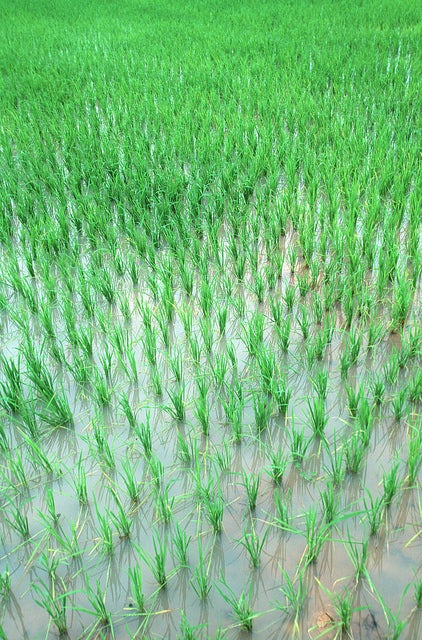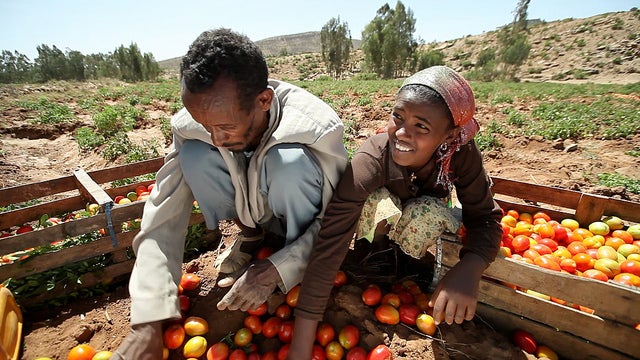 Today, all the necessary information assets are available to provide actionable insight to farmers: models, real-time local weather, crop and agronomic insight and calendars. What is also emerging is the technology to deliver actionable insights directly into the hands of farmers: information and communication technologies (ICTs) including cell phones, tablets and other personal communication tools.
Today, all the necessary information assets are available to provide actionable insight to farmers: models, real-time local weather, crop and agronomic insight and calendars. What is also emerging is the technology to deliver actionable insights directly into the hands of farmers: information and communication technologies (ICTs) including cell phones, tablets and other personal communication tools.
With a cell phone in hand, a farmer becomes connected to a network of invaluable – and timely – information. There is greater demand for information as extreme weather variability necessitates new farming practices. Local and timely insights help inform farmer decisions. Big Data methods and practices, meanwhile, ensure that this multi-directional information contributes across the agricultural value chain as input providers and produce buyers are also informed.
The warming of the atmosphere is leading to a tremendous increase in weather variability. This variability affects agriculture in a multitude of ways and most insidiously for farmers, in the uncertainty that impacts each step in their production and livelihoods.
The most common human reaction to uncertain times is to become more risk averse. For our planet’s 570+ million small-holder farmers, this means lower productivity. With the impeding population surge, particularly in Africa, and diet changes requiring “70 percent more food production,” change must come now.
The agricultural value chain is a complex system connecting research, input providers, service providers, growers, buyers, processors, and wholesale/retail. Most links in the system are compounded by the logistics of moving massive tonnage of material over land and water. Words like ‘resilience’ and ‘robust’ are repeatedly referenced when addressing what farmers ‘need to be,’ when, in fact, the whole value chain needs to be agile and responsive to climate change. I would add another term to those two: antifragile.
 Complex systems are all about information. In times of great variability, the whole of the agricultural value chain requires in-time, localized information to solve, limit and prevent the myriad of compounding events that lead to negative human impacts. Most importantly, complex systems, if given symmetrical and specific information, can become learning systems that adapt and flex to variability and thus become ‘antifragile.’
Complex systems are all about information. In times of great variability, the whole of the agricultural value chain requires in-time, localized information to solve, limit and prevent the myriad of compounding events that lead to negative human impacts. Most importantly, complex systems, if given symmetrical and specific information, can become learning systems that adapt and flex to variability and thus become ‘antifragile.’
Big Data methods, analysis and approaches can deliver information to help the agricultural value chain become more antifragile (and yes, robust and resilient).
Climate change models are challenged to provide local information critical to understanding its impact on agriculture. “Anticipating appropriately the impacts of climate change on agriculture requires data, tools and models at the spatial scale of actual production areas.” ( CSA Sourcebook, FAO).
The Intergovernmental Panel on Climate Change notes that “Smallholders and pastoralists will suffer complex, localized impacts.”
“In Uganda in 2014, reports of a 30 percent decline in common bean yield due to foliar disease – attributed to warmer nights… Where the blend of the excellent CSA (Climate Smart Agriculture) work can really drive towards better information is in the connection to actual localized weather data – and the farmers have need for this information. Although climate models are critical for understanding long-term impacts, they simply…cannot project climate change effects precisely, neither in time nor at the local scale needed for decision makers." (CSA Sourcebook, FAO).
This gap can only be filled by real-time, localized weather data. This is aWhere’s contribution to both monitoring real-time agricultural production (and aggregating the information for a food security view) and to supporting CSA. When evaluated by CSA science, these local, real-time weather data will build towards localized CSA recommendations that fit – and are communicated to – the farmer’s ability to implement now.
 Over the past decades, a tremendous amount of data has been collected across Africa. We know a lot about every single location. Models have been built to further understand, and even predict, both abiotic and biotic processes, and much money and effort has been spent reacting to some significant agriculturally impactful events.
Over the past decades, a tremendous amount of data has been collected across Africa. We know a lot about every single location. Models have been built to further understand, and even predict, both abiotic and biotic processes, and much money and effort has been spent reacting to some significant agriculturally impactful events.
We now have the capacity to create a real-time, localized, agricultural production tracking and monitoring system – a food/nutrient security information system. What Big Data does to optimize our morning commutes in cities can also be done to monitor agriculture across Africa.
With ICTs as data collection devices and as data receivers (farmers with phones receive SMS weather forecasts for example – and can answer queries and send information), a food security system can be tied to rapidly collected, on-the-ground information to calibrate “insecurity“ indices, thus enabling targeted responses tailored to the actual need.
This is Big Data at work – optimizing across the agricultural value chain the information to drive great decisions on-the-ground and in real time. As for all that localized information, this becomes the foundation for aggregated data that would show production deficits tied to a population’s need (it is all about location – and infrastructure or the lack thereof). Significant optimization of targeted response/interventions result.
A vision? Yes. But achievable. ICTs enable multi-directional communication thus tying local conditions to broad area trends all monitored and reported in real-time.


Join the Conversation